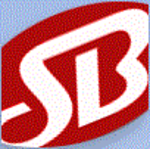Description

Servant Keeper

Tabernacle
Comprehensive Overview: Servant Keeper vs Tabernacle
Servant Keeper and Tabernacle are software products that cater to specific needs within the religious and nonprofit sectors, primarily focusing on congregational management and operational efficiency. They are designed to support the administrative functions of churches and similar organizations.
a) Primary Functions and Target Markets
Servant Keeper:
-
Primary Functions:
- Member Management: Facilitates tracking of member information, attendance, and participation.
- Contribution Tracking: Manages donations, pledges, and financial contributions with detailed reporting.
- Communication Tools: Provides mass email and traditional mail capabilities for outreach.
- Child Check-In: Ensures child safety with secure check-in and check-out processes.
- Event Management: Organizes church events and manages volunteers and resources.
-
Target Market:
- Churches of various denominations and sizes.
- Faith-based organizations requiring structured membership and donation management tools.
Tabernacle:
-
Primary Functions:
- Events and Calendar Management: Customizable calendars and scheduling tools.
- Facility Management: Manages booking and logistics of church facilities.
- Integration with Other Technologies: Often includes compatibility with existing church software and services.
- Data Analytics: Provides insights and analytics related to church operations.
-
Target Market:
- Medium to large-sized churches needing comprehensive operational management.
- Religious organizations with complex event and facility management needs.
b) Market Share and User Base
Servant Keeper is one of the more recognized names in church management software due to its long-standing presence in the market. It has a notable user base, particularly among small to medium-sized churches that prioritize member and donation management.
Tabernacle, while not as broadly recognized as Servant Keeper, targets a niche market with a focus on efficiently managing church operations and facilities. Its presence is more concentrated among larger churches with specific logistical needs.
Obtaining precise market share statistics can be challenging, as these are often proprietary or varying based on region. However, Servant Keeper is generally perceived to have a more widespread adoption compared to Tabernacle, attributed to its robust member management and communication features.
c) Key Differentiating Factors
Servant Keeper:
- Strength in donor and member management, making it ideal for churches that focus heavily on community and active member engagement.
- Offers more comprehensive child management tools, which is beneficial for churches with active programs involving children.
- Known for its user-friendly interface and ease of training church personnel.
Tabernacle:
- Excels in operational logistics, specifically facility and event management, making it a suitable choice for churches with large campuses or frequent events.
- Typically offers stronger integration capabilities with existing church technologies, which is essential for tech-savvy organizations.
- Customizable functionality that appeals to churches with specific operational requirements.
In conclusion, both Servant Keeper and Tabernacle provide valuable services to churches, but they do so with different focal points. Servant Keeper appeals to organizations where member interaction and financial management are key, while Tabernacle is suited for churches with complex scheduling, facility management, and operational logistics.
Contact Info

Year founded :
1994
+1 800-773-7570
Not Available
United States
http://www.linkedin.com/company/servant-keeper

Year founded :
2022
Not Available
Not Available
India
Not Available
Feature Similarity Breakdown: Servant Keeper, Tabernacle
When comparing church management software like Servant Keeper and Tabernacle, it's important to consider the similarities and differences in their offerings. Both serve similar core purposes but may differ in implementation and specific feature sets. Here's a breakdown:
a) Core Features in Common
Both Servant Keeper and Tabernacle typically offer a range of core features that are essential for church management:
- Membership Management: Both platforms provide tools to manage member information, track attendance, and maintain a directory.
- Donation Tracking: Each software can handle contributions, offering tools for recording and acknowledging donations.
- Communication Tools: Both offer features for sending emails or newsletters to congregants and keeping them informed about church activities and events.
- Event Management: They both facilitate the scheduling and organization of church events, including volunteer management.
- Reporting & Analytics: Each platform provides reporting features that allow users to generate insights from membership and donation data.
b) User Interfaces Comparison
The user interface (UI) comparison involves looking at how intuitive and visually appealing the software is for users:
- Servant Keeper: Known for its straightforward and user-friendly interface. It typically provides a more traditional layout that may appeal to users who prefer a simple and direct approach to navigation.
- Tabernacle: May offer a more modern user interface, potentially featuring more customizable dashboards or advanced visuals. This might appeal to users who are accustomed to contemporary design trends.
Both interfaces aim to accommodate users of varying technical skill levels, but preferences may vary depending on individual user needs and expectations.
c) Unique Features
When it comes to unique features, each product may have specific capabilities or integrations that set it apart:
- Servant Keeper: Often praised for its seamless integration with other software programs and extended customization options. It might offer more in-depth data tracking options, which are useful for larger congregations.
- Tabernacle: Could stand out with specific features like advanced mobile support or unique offerings in volunteer coordination and engagement tools tailored to digital environments.
Overall, the choice between Servant Keeper and Tabernacle might come down to specific community needs, the technological comfort of the staff, and the user experience preferences of the organization. It's advisable to trial both systems, if possible, to see which aligns best with the administrative and pastoral goals of the church.
Features

Not Available

Not Available
Best Fit Use Cases: Servant Keeper, Tabernacle
Servant Keeper and Tabernacle serve specific needs within the realm of church and ministry management, but each has its unique focus and ideal use cases. Here's a breakdown of where each excels:
Servant Keeper
a) Types of Businesses or Projects: Servant Keeper is primarily designed for churches and religious organizations that need comprehensive church management software. It is particularly well-suited for:
- Medium to Large Churches: With extensive membership, where tracking individual and group engagement is crucial.
- Multi-Campus Churches: Organizations managing several locations benefit from its robust features.
- Churches with Active Donor and Volunteer Programs: Its donor management and volunteer coordination tools are very effective.
b) Ideal Scenarios:
- Churches requiring detailed member management, attendance tracking, and communication tools will find Servant Keeper advantageous.
- Those needing integration with financial and accounting systems for tithes and contributions.
- Churches aiming to improve member engagement through regular newsletters, text messaging, and emails.
d) Industry Verticals or Company Sizes:
- Religious Organizations of Various Sizes: While more beneficial to medium and growing churches due to its scalability, even smaller congregations can leverage its tools for growth.
- Nonprofit Organizations: That require robust donor and membership management tools.
Tabernacle
b) Preferred Scenarios: Tabernacle focuses on spiritual development & discipleship tracking. It is ideal for:
- Small to Medium Churches: Especially those focusing on discipleship programs and wanting to emphasize community outreach and spiritual growth.
- Churches wanting to emphasize spiritual engagement: Those prioritizing spiritual education and individual spiritual journeys.
d) Industry Verticals or Company Sizes:
- Niche Congregations: Smaller, tight-knit religious communities that prioritize personalized spiritual journeys over administrative management.
- Educational Ministries: Those that require a platform for facilitating small groups, classes, or spiritual curriculum delivery.
Catering to Different Needs:
While both Servant Keeper and Tabernacle serve religious organizations, their focuses differ significantly in catering to different industry needs:
-
Servant Keeper is more administrative and donor-focused, offering robust solutions for financial tracking, membership records, and communication.
-
Tabernacle is centered on nurturing spiritual growth and community engagement, with tools to support discipleship and personalized member experiences.
Both platforms can be adapted to various scales of operation, with Servant Keeper being more suited for larger operations needing extensive administrative features, whereas Tabernacle is more beneficial for communities focusing on intimate spiritual connection and growth.
Pricing

Pricing Not Available

Pricing Not Available
Metrics History
Metrics History
Comparing teamSize across companies
Conclusion & Final Verdict: Servant Keeper vs Tabernacle
When deciding between Servant Keeper and Tabernacle for managing church administrative tasks, it's important to assess which software provides the best overall value considering the specific needs of your organization. Here’s a breakdown that includes pros, cons, and tailored recommendations for each product.
Conclusion and Final Verdict
a) Considering all factors, which product offers the best overall value?
The best overall value depends on the specific needs of the church. However, Servant Keeper is generally known for its comprehensive feature set and user-friendly interface, making it a strong contender for organizations that prioritize robust functionality and ease of use. Tabernacle, on the other hand, may offer more specialized tools for smaller congregations or those with specific niche requirements.
b) Pros and Cons of Choosing Each Product
Servant Keeper:
Pros:
- Comprehensive Features: Offers a wide range of tools for membership management, contribution tracking, and communication.
- User-Friendly Interface: Known for its intuitive design, which requires minimal training for new users.
- Scalability: Suitable for churches of various sizes, accommodating growth effectively.
- Strong Support and Community: Provides good customer support and an active community for troubleshooting and best practices.
Cons:
- Pricing: Can be on the higher end, which might be a consideration for smaller churches.
- Complexity for Small Churches: Some smaller congregations may find the feature set overwhelming for their needs.
Tabernacle:
Pros:
- Cost-Effective: Generally offers a more affordable pricing model, which can be attractive to smaller churches or those with limited budgets.
- Focused Functionality: May provide more specialized tools and features that cater to specific denominational requirements.
- Simplicity: Easier to navigate for churches that do not require extensive features.
Cons:
- Limited Features: May lack some of the more advanced features that larger churches or those expecting growth might need.
- Customization: Might offer less flexibility in terms of customization compared to other software solutions.
c) Specific Recommendations
-
Identify Church Size and Needs:
- If your church is large or growing, requiring a robust and scalable solution, Servant Keeper may offer the best long-term value.
- For smaller churches or those with specific niche needs, Tabernacle might be more suitable due to its cost-effectiveness and specialty features.
-
Budget Considerations:
- Consider the total cost of ownership, including upfront costs, subscription fees, and any potential add-on features or services.
-
Usability and Training:
- Determine the level of technical expertise within your team. A more intuitive platform like Servant Keeper might reduce training time.
-
Trial and Demos:
- Take advantage of free trials or demo versions of each software to evaluate how each handles your specific tasks and requirements.
-
Feedback from Other Churches:
- Gather input from other churches similar in size and denomination to determine real-world performance and satisfaction.
In conclusion, the decision between Servant Keeper and Tabernacle should be informed by a careful consideration of the specific needs of the church, budget constraints, and the desired level of functionality and support. Conducting a thorough evaluation and leveraging trial opportunities will help make a well-informed choice.
Add to compare
Add similar companies



